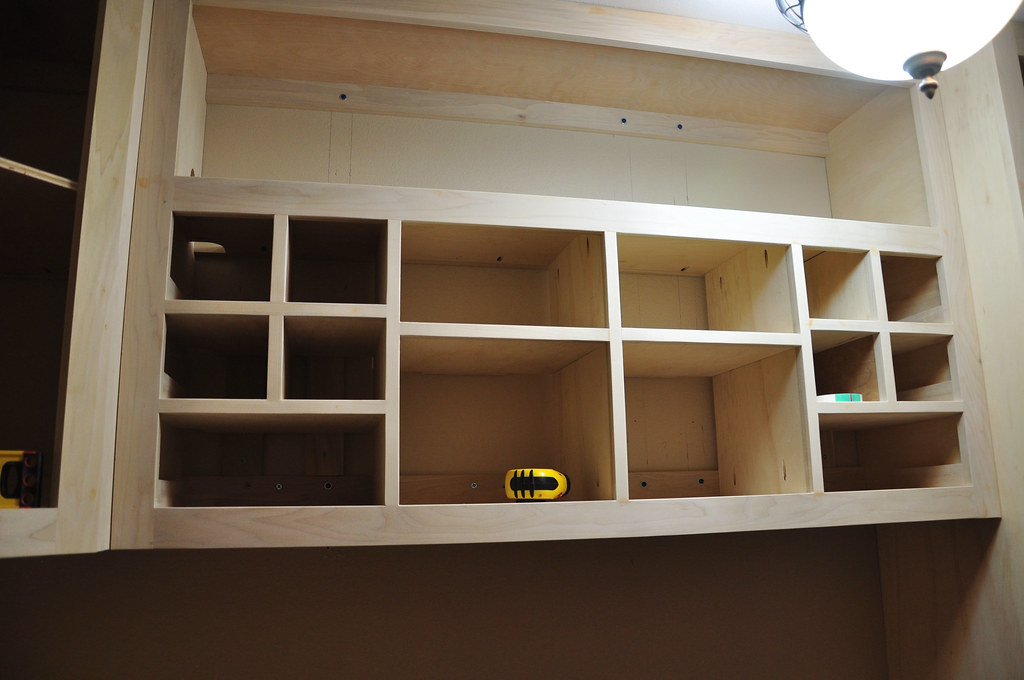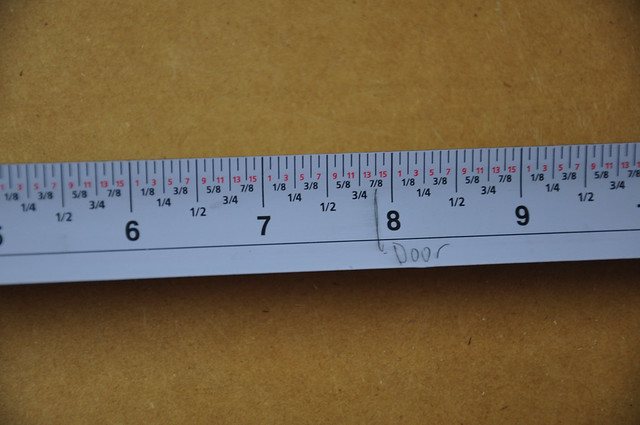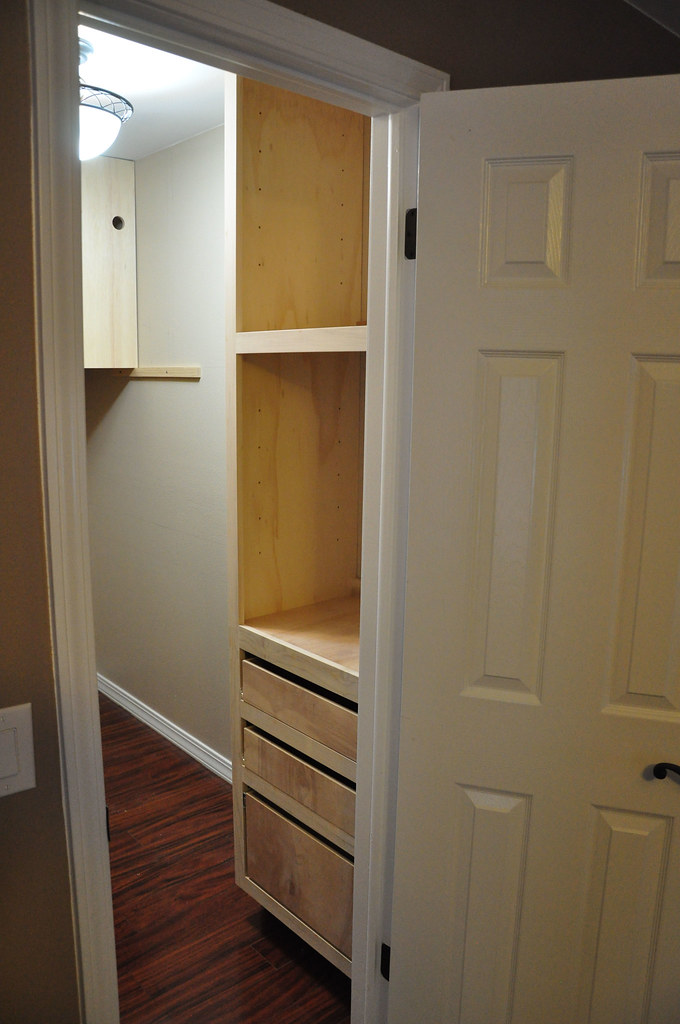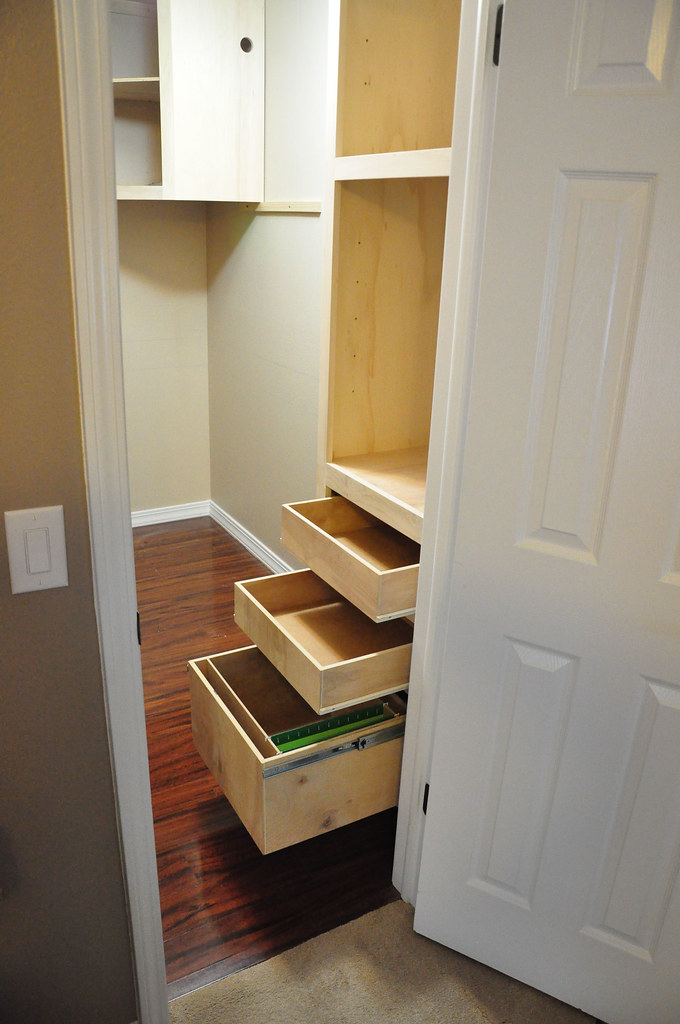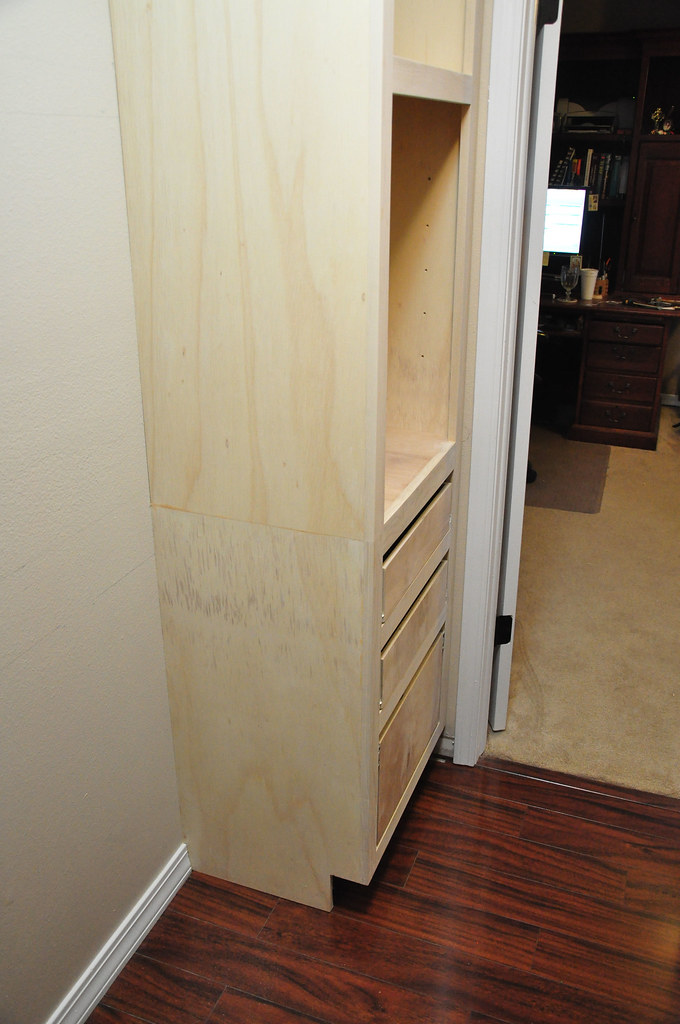This is the fifth post in my Art Room Project series. Find the Table of Contents at the first post, Getting Started.
Project Yourself
Now the corner and side cabinets are in, I can work on the project cabinets that span the two.
This was part of the project needing the tweaks I spoke about earlier. My SketchUp design expected certain distances between the two cabinets, but due to imperfect wall and wood measurements, the spacing was a little different. Not a problem. Just re-measure and design to fit.
Measuring Tricks
As you can see, there was a lot of measuring, but it wasn't too difficult. Instead of constantly relying on my tape measure, I just cut scrap wood to the regular sizes and used them to make sure it fit. This is like the 'story stick' method of measuring used by most woodworkers. (Nice story stick method video here.)
Another measuring trick I learned the hard way: Buy a good, accurate tape measure and only use that one tape measure for your real cuts. If you are like me, you might have 2 or 3 tape measures lying around, and you will be tempted to grab whatever is handy for a cut. Each tape measure, regardless of quality, has a degree of accuracy and slop in the measurements--even in the same brands. With woodworking, consistency is more important than accuracy. My tape measure may be off by 1/16", but if I use it everywhere, all my measurements will still be consistent and reliable.
My Tape Measure
I don't get money from this tape manufacturer (I would gladly take it if they sponsored me), but I love this product. It is by a company called FastCap, and I use their Story Pole Tape measure.
What makes this tape unique is the markable surface. I can easily mark points on the tape with a pencil, and erase it later. The black on white with red 16ths are easy to read, and the lines are thin enough to feel accurate. Also, I'm still working on my fractional math, so having the fractions on the tape have been wonderful.
Would it be nice if the numbers were on both sides? Sure, but I've been able to work around any issues with it. Just flip the tape and read it upside down. No biggie.
I've had an issue with durability in the case, as the lock has broke, but this is after two years of constant use. I would easily recommend and buy this brand again.
Where to Spend Money
One can usually skimp and save money on most tools. Is a $10 screwdriver better than a $1.50 screwdriver? In some ways, yes, but they will both drive screws (at least for a while). With measuring tools, however, it is usually worth the extra money to get the higher quality. The money goes into insuring that measuring 16" is always accurate and easy to see, a square will always be 90 degrees or an angle always 45 degrees.
On some projects, a 91 degree right angle can be tolerated, but usually that 1 degree error, or fraction of an inch error, is multiplied over many pieces, creating an exponential problem.
Machinists live in a world of thousands of an inch tolerance. Woodworking is more forgiving, but when you can trust your equipment to a high tolerance, it makes building much more predictable and enjoyable.
Next Post: Lower Desk
Saturday, December 11, 2010
Saturday, December 4, 2010
Art Room Project - Side Cabinets
This is the fourth post in my Art Room Project series. Find the Table of Contents at the first post, Getting Started.
Side to Side
Next we have the side cabinets. Here they are installed.
Since the cabinet goes floor to ceiling, I had to make them in two parts, the lower drawers made first and installed, then the top shelves built on last.
The top will have adjustable shelves I will install later.
Drawers
The drawers are basic. I built the bottom drawer to handle hanging files if needed. I'll be adding doors and drawer fronts later.
See the Seam (not)
The view from the inside shows the seam where the top and bottom cabinets meet. I put the seam where the desk top will line up, so the seam won't be visible.
Now I have the anchor cabinets in the room, it is time to build around them.
Next Post: Project Cabinets
Side to Side
Next we have the side cabinets. Here they are installed.
Since the cabinet goes floor to ceiling, I had to make them in two parts, the lower drawers made first and installed, then the top shelves built on last.
The top will have adjustable shelves I will install later.
Drawers
The drawers are basic. I built the bottom drawer to handle hanging files if needed. I'll be adding doors and drawer fronts later.
See the Seam (not)
The view from the inside shows the seam where the top and bottom cabinets meet. I put the seam where the desk top will line up, so the seam won't be visible.
Now I have the anchor cabinets in the room, it is time to build around them.
Next Post: Project Cabinets
Subscribe to:
Posts (Atom)

